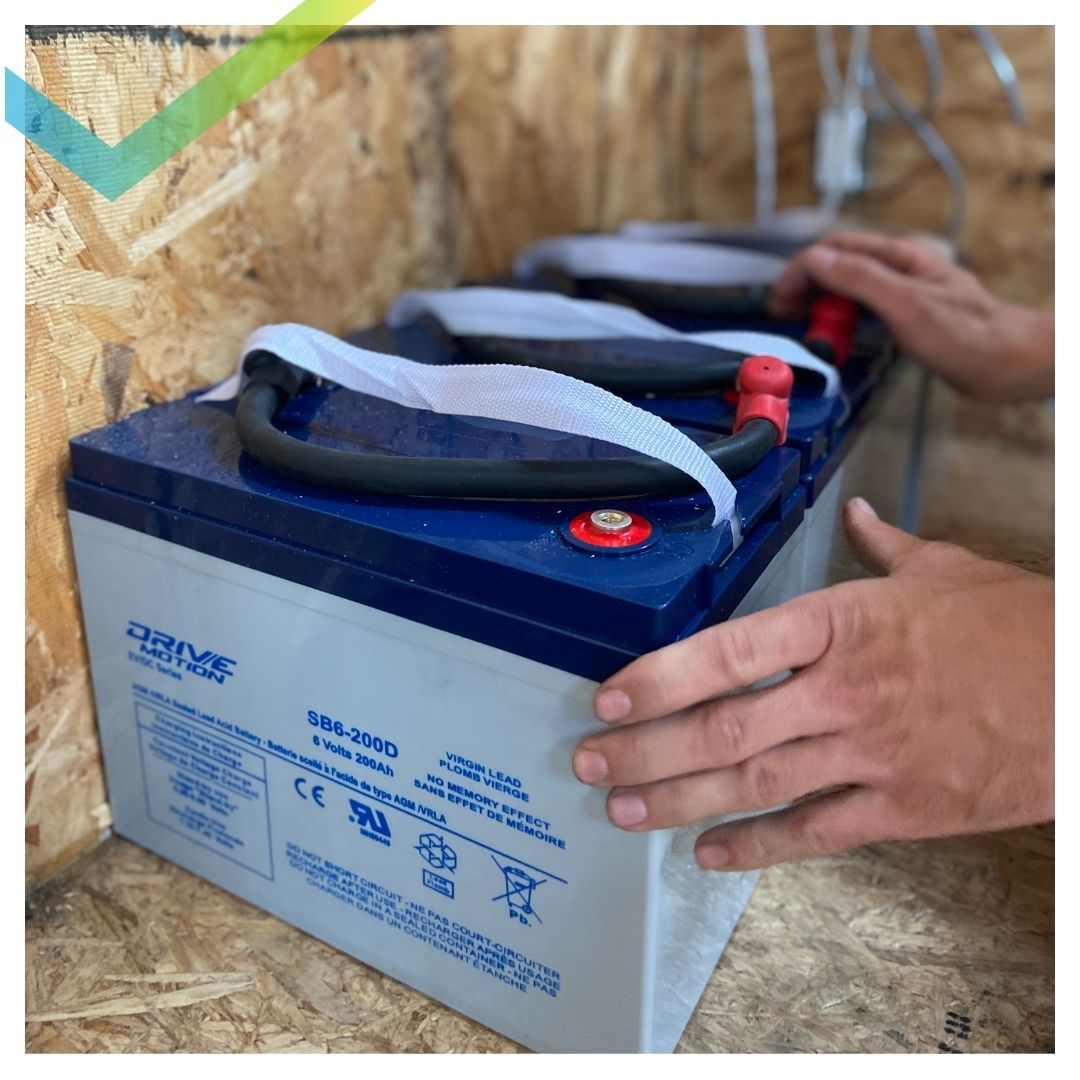When equipping yourself for a solar energy system, a large part of the budget goes into batteries. It is therefore completely normal to find out about the best practices for taking care of your devices and extending their lifespan, because yes, it is something possible.
We have already seen lead acid batteries guaranteed for 3 years last up to 15 years, simply by annual maintenance of the density and water level of the batteries.
Although we also sell gel batteries, for this article we will focus on lead-acid, AGM and lithium batteries.
The charge level VS the number of charge cycles
When you start in the field, you often hear: “the batteries must not go below 50% of their charge”.
This is true for lead-acid and AGM batteries which have similar technology (we will come back to the lithium type later).
But 50% of what?
50% of their amperage.
So a battery that has say, 1169A over 20 hours should never use more than 584.5Ah over 20 hours.
Quite simple.
On the other hand, a battery rarely comes alone. Often, they will be connected together at 12, 24 or 48V. We can find systems connected at 36V, but this is a connection that is out of the ordinary and which is only done according to very specific needs.

At this point, you can look at the battery bank voltage.
Here, we forget the notion of 50%.
The system should never drop below the voltage the system is plugged into.
For example, a 12V system should not go below 12V. It seems funny to say, but if you observe your battery using a voltmeter, you will notice that when it is full, the voltage will be around 12.70, 12.75.
As a picture is worth a thousand words, we share with you a charter of recommended loads.
- Each battery comes with its technical sheet. Inside you will find the number of cycle lifes that it should give you depending on whether it is maintained or emptied frequently. This is why it is so often advisable to have a charger.
For those who would like to know more about the information found in the technical data sheets, you can consult the article The battery – What to look for in the technical data sheet. We explain the elements to take into account and what they mean in concrete terms.
Lithium battery
For the lithium battery, we are completely elsewhere.
Most models of this type of battery have a BMS (battery management system) which manages the charging and discharging of electric batteries, which allows them to discharge up to 100% without affecting the duration of life.
However, we recommend giving yourself a margin and calculating up to 80% of its capacity when sizing your system. This is because the remaining 20% makes it possible to compensate for unforeseen events on the one hand and on the other, to meet the energy needs that may be required by options that certain lithium batteries have such as self-heating.
To find out more about the advantages and disadvantages of each type of battery, we invite you to read the following article: How to choose your battery, The ABC of types of batteries.
Welcome to newbies: Add a battery to an existing battery bank
We can see the battery as a tank: the bigger it is, the more energy we can store and be autonomous for a long time.
When equipping ourselves, we will therefore set our energy requirement according to the devices we want to operate, the frequency of use and the number of times (duration).
And then through use, we can notice that it wouldn't be so bad to have a little more autonomy, to operate more devices or to operate them for longer.
Before re-equipping and starting fresh, you can ask yourself the following questions:
- Is my energy need really greater than the initial one I had set?
- Are my batteries more than 2 years old?
Don't worry, we don't discriminate based on age. No, it's that for lead-acid and AGM type batteries, worn batteries will cause the new ones to age prematurely. And as we said in this article Life and death of a battery: tips and tricks to extend the life of your batteries, since batteries are often the biggest part of the bill, we want to do everything to take care of them and extend their lifespan.
For lithium batteries, it is not the number of years, but the serial number that must be looked at. As they are equipped with a chip (BMS – Battery management system) which is programmed for X charge and discharge, it is preferable to look for batteries from the same batch so that the parameters are the same.
Covered/not covered, Hot/cold: where to store your batteries
Hot in summer, cold in winter, good weather, bad weather, temperature variations can have an impact on your batteries. This is why, regardless of the type of battery, we always recommend storing them in a place where they can be protected from bad weather.
Here are some general tips depending on the battery type:
- Lead-acid battery
As these batteries will produce fumes, we will avoid enclosed spaces and ensure that there is ventilation.
There is a popular belief that this type of battery should not be placed directly on a concrete floor.
This used to be true, but today, with new materials used to make batteries (like plastic and rubber), this is no longer the case.
This is because before, we found wood in the box and the electrical cells were made of glass. If the floor was wet, the wooden box would sweat, which would cause the battery to discharge1.
- AGM
No fumes, affordable, it is often what we will find for enclosed spaces such as campers, RVs and boats.
- Lithium :
The lithium battery can discharge at any temperature.
On the other hand, to recharge, it needs to be in a temperate environment around 5 degrees Celsius.
Although there is a self-heating option, it is not sufficient to compensate for temperatures going below zero.
Bulk stuff:
Finally, the tips to remember to optimize the life of your battery are:
- To maintain the charge of its battery bank;
- Avoid discharging it below 50% of its capacity (AH);
- Avoid pairing batteries with large age differences;
- Protect your batteries from bad weather.
To find out more about the technical elements to consider when purchasing your battery:
The battery: what to look for in the technical sheet
and to learn more about the differences and advantages of each type of battery:




